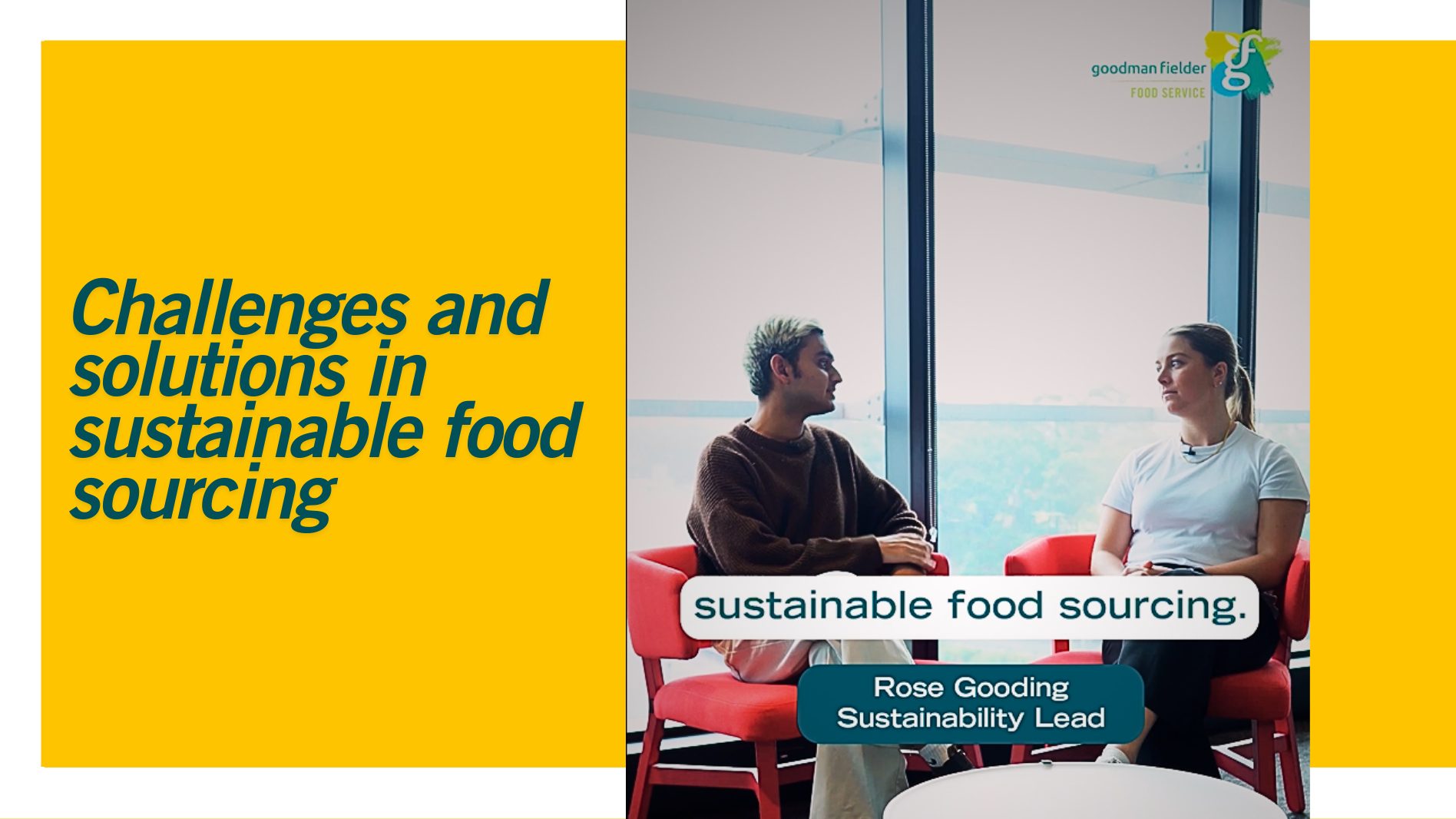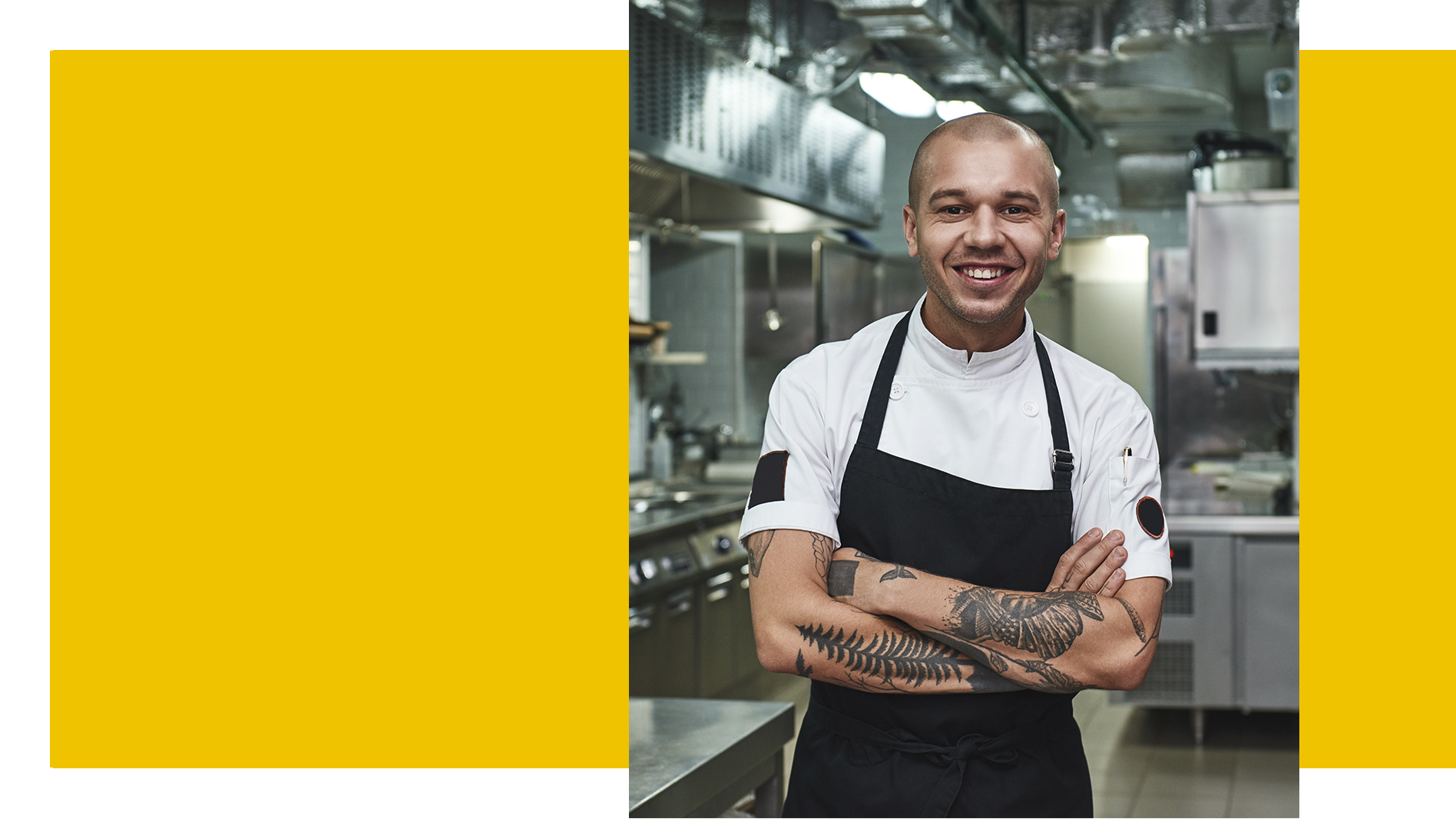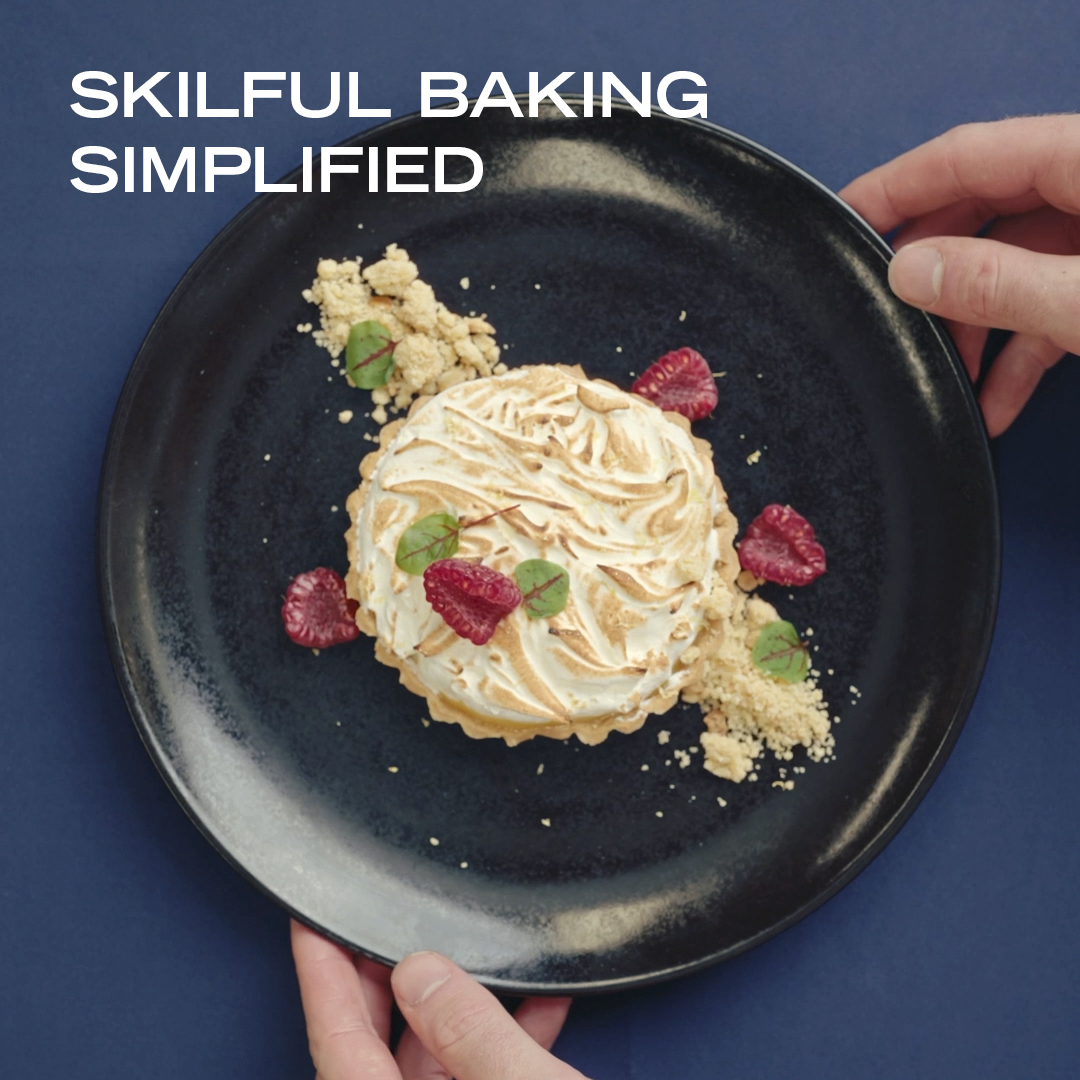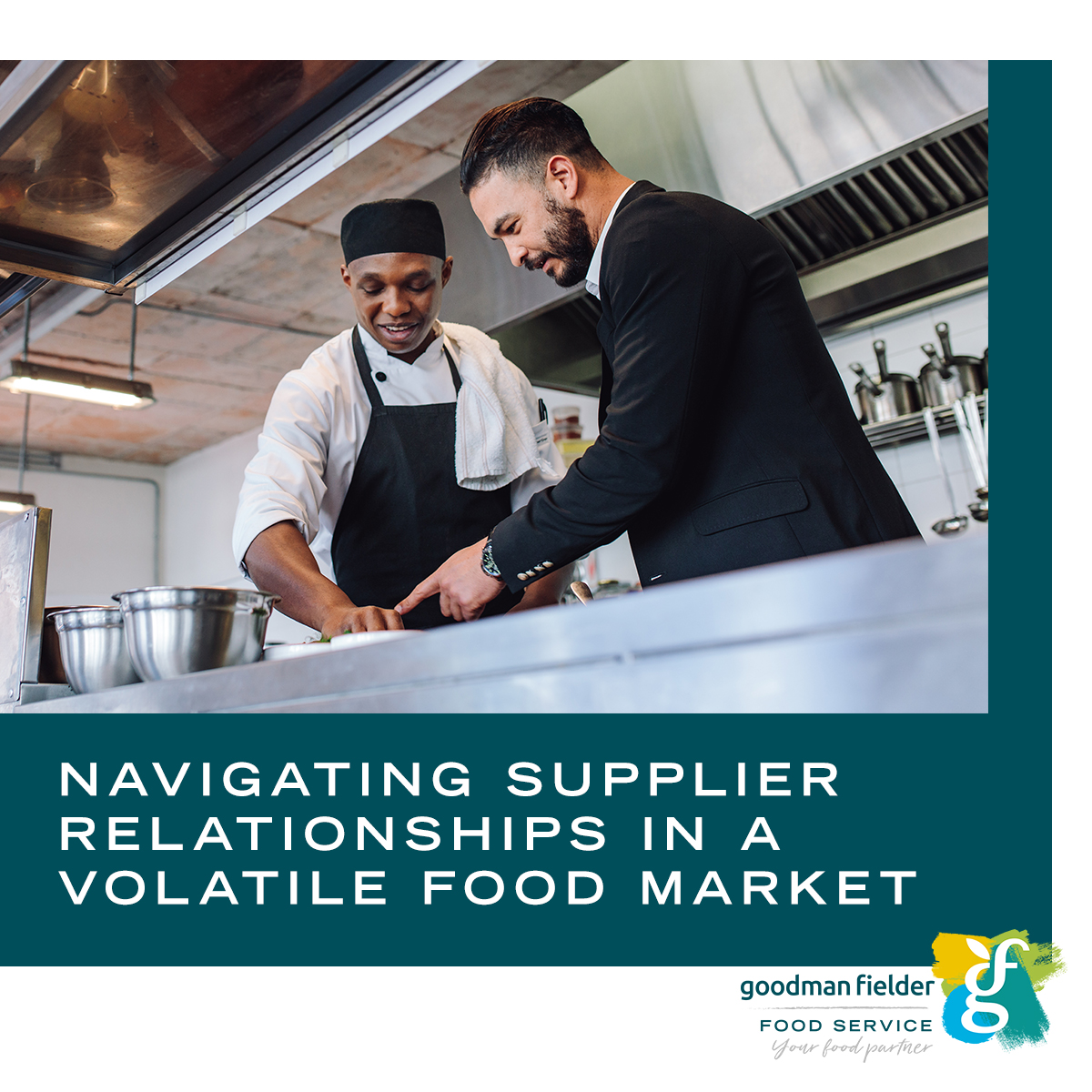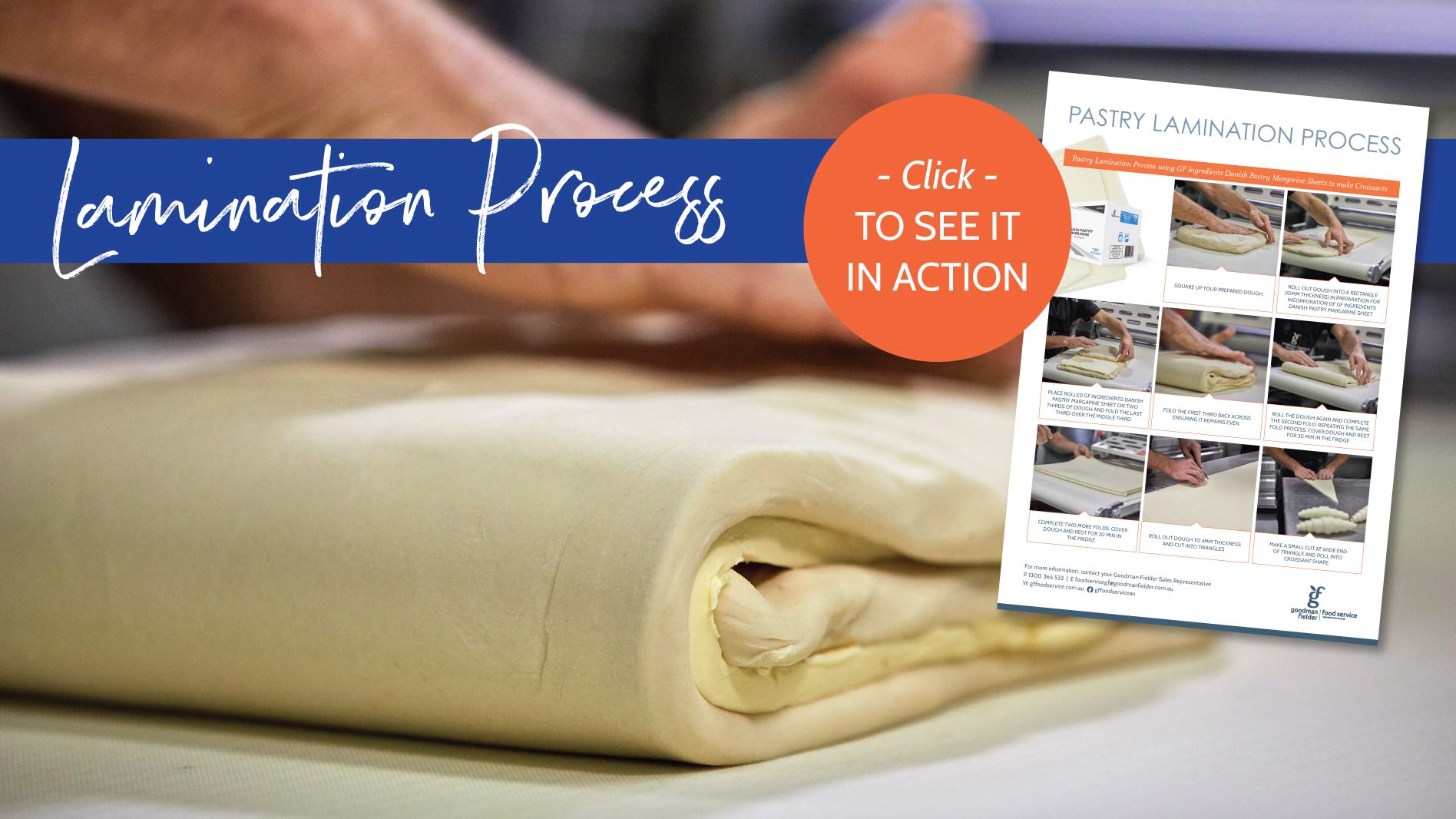
The research and trial and testing that goes into developing mouth-watering baked goods is a science experiment in itself. Creating beautifully golden, flaky baked goods every time can be a difficult, time consuming task. And ensuring the flavour of your goods aren’t being compromised can even be harder.
When it comes to delivering world-class baked goods, it can come down to one simple procedure – pastry lamination. Lamination is the technique of creating layers of dough and fat that forms the flaky layers that is best showcased in croissants, danishes or any puff pastry applications.
The process of lamination is simple, but it requires full concentration as the difficulty lies in the accuracy needed. But before you start your lamination process you need to ensure your dough is cold as it assists in creating a smooth, successful procedure. Making sure the dough is of a cool temperature is important because it reduces the risk of the margarine or butter melting, eliminating the risk of it seeping into the dough layer, preventing it from rising correctly.
Lamination consists of rolling out dough, adding a layer of fat, in most cases of butter or margarine and folding the dough. The steps are repeated a number of times until the required number of dough and fat layers are achieved. To guarantee an even spread of the fat during the process, the use of Goodman Fielder Ingredients Bakery Margarine Sheets are recommended.
The new-to-the-market sheets are versatile, convenient and made with high quality vegetable margarine that has been specially developed for lamination – meaning easier preparation, ultimately saving time and money. While they are a cheaper replacement to the butter solution, the sheets still provide richness and stability to finished baked goods without compromising on flavour.
When baked, laminated doughs rise into those delicious, flaky treats we all know, love and thrive to achieve every time a tray of goods is popped into the oven. When it comes to types of laminated doughs that are used within the kitchen, there are many to suit different desired outcomes. For example, types of laminated doughs include croissant dough, Danish dough and puff pastry.
Danish dough contains dairy, eggs and sugar, whereas croissant dough contains just flour, water, salt & yeast. Compared to the two, puff differs again as it does not contain any yeast and rises only when steam forms from the moisture in the bakery fat.
So, when it comes to pastry lamination the process can be long and fiddly but the outcomes are worth it. When you ace the procedure, you will be sure to receive golden, flaky pastry that just melts when consumed.
Goodman Fielder supply high-quality wholesale margarine and spreads to restaurants, catering companies, hotels, bakeries, cafes and many other commercial environments.
Download our Pastry Lamination Process infographic now!
